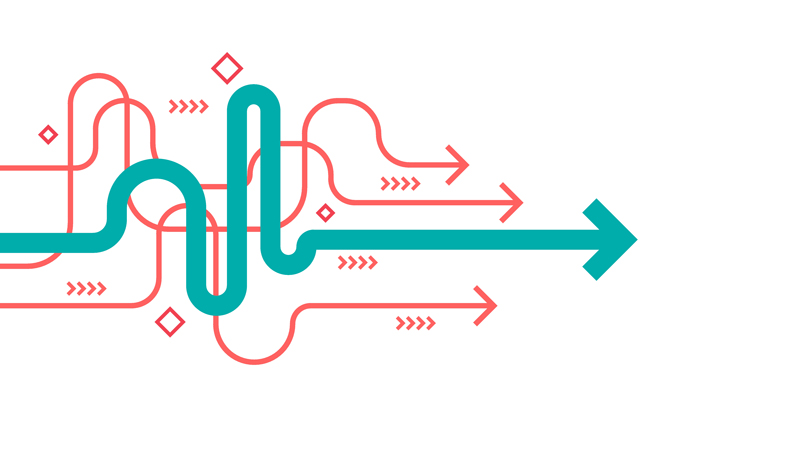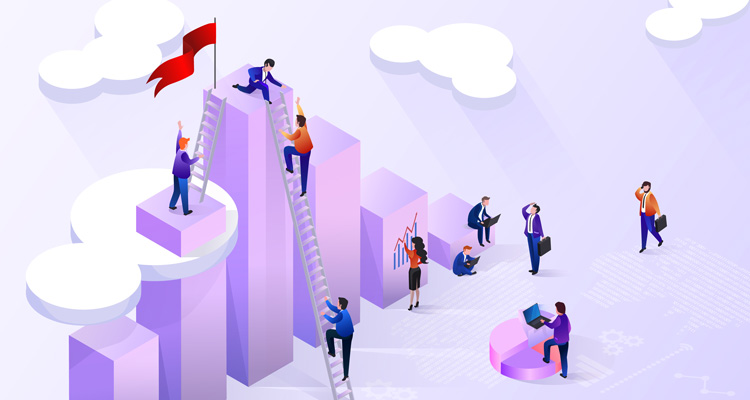
Even if it is only a conversation, in the new decade, your organization is likely on the path to Agile maturity. From enabling customer value delivery at speed to empowering organizations to adapt to changes in the marketplace with strategic insight and visibility, Lean-Agile practices offer significant value for modern organizations. Implementing these practices, however, can be as draining and time-consuming as a triathlon – extensive training, substantial changes, continuous planning and adjustment, and somehow also very dehydrating.
That is why the team at Planview has developed the Lean-Agile Pathfinder to help you assess where you are in your Agile maturity journey and to provide guidance on where to focus the next steps of your Agile transformation. We’ve broken down the path to becoming a Lean-Agile Enterprise into six key stages described below: New to Lean and Agile, Exploring Lean-Agile, Starting to Scale Agile, Scaling Agile, Starting to Think about Lean Portfolio Management, and Enterprise Agility. Let’s talk about these steps in more detail.
Six Key Stages to Becoming a Lean-Agile Enterprise
1. New to Lean and Agile
At this stage of Agile maturity, the primary focus is on learning about Agile methodologies, researching implementation roadmaps, and/or determining which Lean-Agile practices will make their debut within your organization. Teams may experiment with Scrum, Kanban, Scrumban, or a hybrid workflow management processes, and likely, the practices have yet to expand outside of a few teams. To move the transformation forward in your organization, you are tasked with demonstrating the value of the practices you have implemented. As Agile teams see success with these practices, we often see other teams consider and adopt similar approaches – creating some Agile groundswell, if you will.
2. Exploring Lean-Agile
While you’re anticipating the significant wave of Agile that is headed for your organization, for the time being you are wading in the shallow end of the methodology. You may be practicing Agile processes within one department or across several teams, visualizing and shaping the work in progress and value delivered. At this stage of your Agile journey, your focus is on consistently demonstrating the value of Lean-Agile planning and delivery to your leadership in order to drive adoption, increase your number of fixed teams, and invest in your Agile transformation. To make sure you stay afloat, a solid Lean-Agile solution is needed to ensure you are able to build your case for further investments and scaling.
3. Starting to Scale Agile
Agile principles have a place in your organization, albeit still more limited than you or the organization may like. Your instances of Lean-Agile or hybrid practices are enabling your teams to have more flexibility in their planning and value delivery. The next steps in your Agile journey revolve around increased visibility and leadership buy-in as well as figuring out how to get your existing teams to plan, collaborate, and better coordinate their work. To be successful at this stage of transformation, your organization needs clarity and visibility into what teams are doing and how their work impacts other Agile teams and ties into the portfolio. As you gain more insight into workflows, you can better address bottlenecks and continuously deliver what your customers want, when they want it. As part of this initiative, you may see that your current tools and processes must evolve with you, or be replaced to get the kind of visibility you need. Pairing the right tools, with solid practices, leadership-support, and a culture ready to change are critical success factors needed to make scaling Agile in your company feasible.
4. Scaling Agile
You’re well on your way to coordinating and planning work with your teams of teams. At this stage, it’s important to ensure the teams are getting the information needed from the enterprise and the portfolio. Often, organizations start to implement quarterly planning, or as Scaled Agile Inc. refers to it, Program Increment (PI) Planning. This is an Agile ceremony designed to bring teams of teams (also known as Agile Release Trains) together so that they can plan their work over the next increment of time. Teams typically need a software solution or tool to manage the outputs of these planning meetings effectively and to keep track of how their work is progressing against the portfolio or the enterprise’s strategic objectives. Tools that were onboarded at the beginning of an Agile journey may no longer suffice as Agile Release Trains are launched. Tooling here needs to focus on cross-team alignment, planning, coordination, and dependency mapping to ensure the work of the teams is achieving maximum benefit and value delivery.
5. Starting to Think about Lean Portfolio Management
At this point, your organization has built up significant momentum in your Agile maturity journey. It’s likely that Agile practices and methodology have spread across multiple departments over the course of your transformation. Your teams are planning more iteratively, collaborating with one another effectively, and delivering customer value at a regular cadence. You may have built one or more value streams or Agile Release Trains that are tying into strategic initiatives. Your investment, funding, and capacity models are adjusting to the Lean-Agile practices at the heart of the business. While significant progress has been made, you’re still green in your ability to pivot as a business and to properly move faster than your annual planning and funding model allows. If your organization is struggling with how to nix projects that are toads, while double-down on the winners, then it may be time to rethink how you fund and manage your portfolio. Implementing a Lean-Agile approach to your portfolio means taking that Agile lens you’ve used at the team level and applying it to the top of your organization. How can your organization start to plan and fund in shorter cycles? How can it reduce governance to make decisions faster? These become the big questions as your enterprise moves closer to agility and you now need a solution (not just a tool) to support this new way of managing the portfolio.
6. Enterprise Agility
You are a part of an Agile Enterprise, but as always, your work is never finished. The pursuit of becoming an Agile Enterprise involves the ability to deliver value at the speed of your customers’ needs. Even at your level of Agility, you must remain dedicated to continuous improvement, space for innovation, and a cohesive portfolio and work delivery model. Your organization will be set up well to adapt to disruptions in the marketplace, as long as you have visibility into the work delivered and its strategic alignment as it flows through the organization. This includes visibility and insight across all parts of the business.
The journey to becoming a Lean-Agile Enterprise is a long, and at times arduous, path to a highly valuable destination. As Agile practices are sweeping across every industry, organizations are trying to imagine what it will look like for them to adopt this methodology and these practices in their own processes. Not every organization will ever fully adopt Agile principles, but rather will find a happy medium between the old and the new ways of operating. Although each organization will define their own roadmap for the future, we developed the Lean-Agile Pathfinder to offer guidance and insight for the journey ahead.
Whatever your style is now, and wherever you want your organization to go, Planview helps you transform on your terms and timeline. To learn more about our Lean and Agile Delivery solutions, visit planview.com/lean-agile-delivery now.





